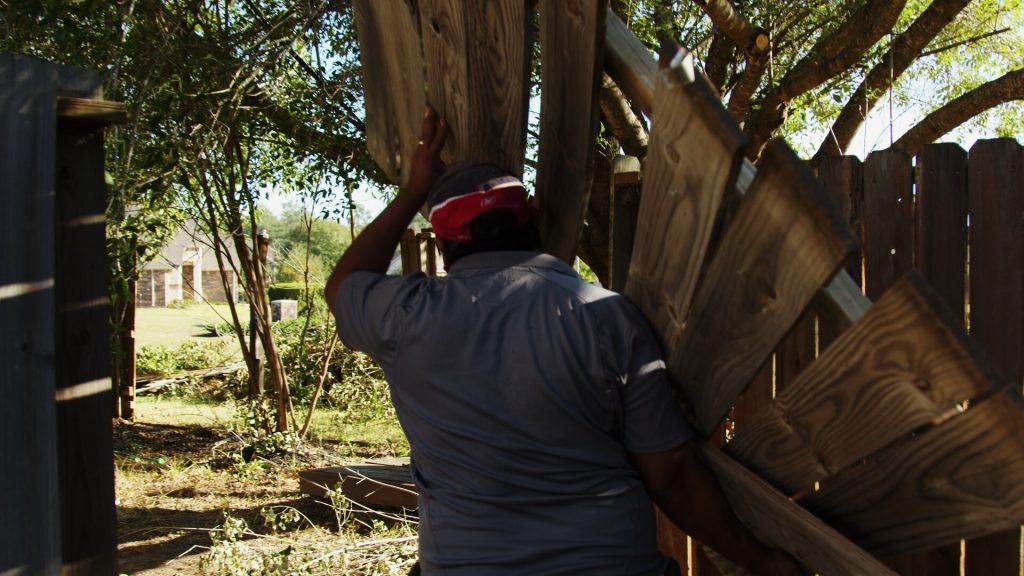The Cost of Fence Installation: DIY vs Professional
Professional fence installation typically involves site assessment and measurement, material selection, obtaining necessary permits (if required), excavation and post setting, assembly of the fence panels or sections, and finishing touches such as gates and staining. Hiring a professional like Texas Fence ensures proper installation and compliance with local regulations.

Costs Comparison: DIY vs Professional Fence Installation
When considering fence installation, it’s essential to weigh the costs associated with both DIY and professional services. Professional installation generally includes the cost of materials, labor, and expertise, meaning you’re paying for comfort, quality of work, and assurance that your fence is being installed correctly. On the other hand, DIY installation requires purchasing materials separately and investing personal time and effort.
The Expenses Breakdown
Let’s start by breaking down these costs further. When you opt for professional installation, the cost typically encompasses all necessary materials and labor. This means that from digging post holes to ensuring proper heights and alignments, the professionals handle everything efficiently. However, it’s important to note that this convenience comes with a higher upfront cost.
For those considering a do-it-yourself project, there’s no overhead for labor unless you decide to hire some helping hands for your fence installation. But remember, purchasing all the tools and materials yourself can add up quickly – not to mention any possible errors resulting from lack of experience or expertise.
For example, if you’re installing a wooden fence on a particularly uneven terrain, there may be a need for specialty tools or additional materials that you didn’t anticipate initially. Overestimating how many materials or tools are needed can mean spending more money than planned for. This level of uncertainty can be frustrating at best and financially draining at worst. It’s essential to weigh these factors when deciding whether to take on the project alone.
Here’s a good way to think about it: Hiring fence professionals is like purchasing an all-inclusive vacation package – your expenses are bundled into one easy payment while maintaining high-quality service standards. On the other hand, undertaking the project yourself is like planning a trip itinerary – details such as transportation, accommodation, food, and activities are all variables that must be accounted for individually.
Essential Materials and Their Prices
When considering material costs for your fence installation, it’s crucial to determine the best fit for your needs. Each material comes with a unique price point, advantages, and considerations.
Wood Fences
Wood is a classic, timeless choice for many homeowners due to its natural look and versatility. It can be painted or stained in various colors to match your home. Generally, the price of wood ranges from $19 to $50 per linear foot on average. However, this cost can vary based on the type of wood fences you choose and customized designs.
Moreover, lower-cost options like spruce or pine could still serve well if finances are a concern. However, keep in mind that these types may require more frequent maintenance than other higher-end woods. Lower upfront costs might even out with potentially higher long-term expenses.
Vinyl Fences
Vinyl fences have seen a surge in popularity due to their durability and minimal maintenance requirements. They are typically priced between $20 to $140 per linear foot, making them more expensive than most wood choices but less expensive than wrought iron options. The initial investment might seem high, but keep in mind that vinyl fences often last longer with significantly lower upkeep costs over time.
Polyvinyl chloride (PVC) is commonly used for vinyl fencing due to its resilience against harsh weather and high durability.
Chain-Link Fences
Chain-link alternatives offer an economical option without sacrificing quality. Their prices typically fall between $8 to $35 per linear foot. A key advantage of these fences is their open-weave construction which allows visibility through them while providing security for pets and kids. Also, chain-link fences are durable and low-maintenance—requiring little upkeep compared to other materials.
Iron Fences
Iron fences are renowned for their elegant appearance and exceptional strength. They come at a cost—ranging between $32 to $75 per linear foot depending on the design’s complexity and height requirements. A basic design might come in at the lower end of the spectrum, whereas intricate designs with custom decorative elements could significantly drive up the price.
It’s crucial to consider your budget constraints and the specific purpose of your fence when selecting a material. Getting clear on what you prioritize will help you determine which material fits your bill.
Each material has its unique features and cost considerations; understanding these factors will lead you to make an informed decision that best matches your needs.
Fence Types and Their Costs
When considering a fence, there are several options to ponder. Each type of fence has distinct features, making them suitable for different purposes, architectural styles, and budget requirements. Let’s delve into some common fence types and their respective costs.
Privacy Fences
Privacy fences are designed to provide seclusion and security by blocking the view between your property and your neighbor’s. Typically constructed with solid panels, privacy fences vary based on the materials used and the desired height. The higher the quality of the material, the more expensive it tends to be. For example, a cedar privacy fence may cost more than one made of spruce or pine.
Picket Fences
Picket fences are a classic choice for many homeowners, evoking a sense of charm and tradition. These fences consist of vertical wooden pickets attached to horizontal rails, creating an open design that provides visibility into and out of your property. Costs vary based on the type of wood used—the higher the quality of wood, the greater the expense.
Split Rail Fences
If you’re aiming for a more rustic and natural look, split rail fences may be an appealing option. These fences consist of wooden posts and horizontally stacked split wooden rails. Split rail fences can add aesthetic appeal while defining boundaries. The cost is contingent on the quality of wood utilized and other installation factors.
Ornamental Steel Fences
For those wanting a combination of durability and decorative appeal, ornamental steel fences are an excellent choice. These fences come in various designs and styles, offering exceptional strength and sophisticated aesthetics. The cost varies significantly due to customizability and material options.
Understanding the costs associated with diverse fence types is crucial in making an informed decision about which type best suits your needs and budget. Each fence type offers unique benefits that correspond to specific preferences and functional requirements. By understanding these differences, you’re better equipped to make a well-informed decision when it comes to selecting the ideal fencing solution for your property.
In detailing the costs associated with different fence types, we have now laid a comprehensive foundation for understanding the value of a skilled contractor in realizing your vision for an ideal fence installation.
Hiring a Skilled Contractor: Things to Consider
It’s often tempting to save a few bucks by taking on a home project ourselves, but sometimes it’s best left to the professionals. Fencing projects can be complex, especially if there are landscape obstacles or property line concerns. Hiring a skilled contractor adds assurance that the job will not only get done but it will be done correctly. But how can you be sure you’re choosing the right one?
First off, think about their experience. How many fences have they built? How long have they been doing this work? A contractor with a lot of experience will know the best way to handle any problems that might come up, translating to less hassle for you.
For instance, if you happen to live on sloped land, building a fence on uneven ground isn’t easy. However, an experienced contractor will know how to tackle this without compromising the durability of your fence.
Another essential aspect is their portfolio. Request pictures of fences they’ve built in the past. Take a good look at them and judge whether they are well-made and sturdy.
Moreover, talk to your neighbors or friends who have had fences installed. They might recommend someone great or warn you about someone who isn’t so good.
Furthermore, ensure that the contractor is licensed and insured – essential indicators of their commitment to the craft. A licensed contractor has undergone training and passed exams showing they understand how to do their job safely and correctly. Additionally, if something goes wrong, you want to be sure that the contractor’s insurance will cover any damages incurred.
DIY Fence Installation: A Step-By-Step Guide
It’s an exciting and rewarding project to build your fence. But make no mistake; it demands time, patience, and skill to complete a fence installation. Let’s walk through a basic step-by-step guide to help you tackle this project.
Step I – Planning
Planning is crucial; diving headfirst into building your fence could lead to unexpected problems down the line. Assess where you want the fence to go, mark out the area, respect property boundaries, get the necessary permits in your area and remember to call utility companies to avoid cutting underground utilities.
Step II – Gathering Materials
Each type of material has its advantages and disadvantages. Once you decide on the type of fence you want (wood, vinyl, chain-link, etc.), measure the length of your yard to determine how much material you’ll need.
Step III – Installation
This step can be labor-intensive and detail oriented as you dig post holes, set the posts securely in the ground with concrete, attach panels or boards to the posts, and install gates if needed. Using a level is crucial here to ensure everything is straight both vertically (plumb) and horizontally.
Step IV – Maintenance
Regularly inspecting your fence once installed is critical. This includes looking for signs of damage such as loose boards or panels or potential rot due to weathering. Prompt repairs and maintenance will ensure your fence lasts longer while upholding its condition.
Evaluating the Pre and Post Installation Process
Before commencing the fence installation process, it’s essential to take the time to properly prepare the area where the fence will be installed. This often involves clearing out any debris and ensuring that the area is level and clear for construction. Another important step in the pre-installation phase is obtaining any necessary permits required for your specific fencing project. It’s important to note that each region or municipality may have different rules and regulations regarding fence installations, so conducting thorough research or consulting with a professional is crucial to ensure compliance.
Marking property lines is another critical aspect of preparatory work. This serves as an essential step in ensuring that the fence is installed within your property boundaries, reducing the likelihood of potential disputes and legal issues down the line. If there’s uncertainty about where your property line begins and ends, hiring a land surveyor to accurately plot these boundaries may be necessary.
Post-installation tasks are equally significant because they influence the long-term condition of your fence. After the fence has been installed, it’s crucial to meticulously inspect every inch of it. Look for any signs of damage or issues right away, such as loose panels, damaged posts, or faulty hardware. Addressing these concerns promptly can prevent them from worsening over time and ensure that your new fence remains strong and reliable for years to come.
Another crucial aspect of post-installation care is familiarizing oneself with maintenance needs such as staining or sealing. Regular maintenance can help extend the lifespan of your fence while preserving its appearance over time. Staining or sealing provides protection from elements and prevents issues like wood rot or weather-related damage.
Taking both the pre and post-installation steps seriously reduces the likelihood of future problems related to your fence, ensures that the construction process goes smoothly from start to finish, and helps maintain the integrity of your investment in the long run.
Understanding and following through with both pre- and post-installation tasks guarantees that your fence will be properly located, constructed safely, and maintained effectively once it’s in place. This keen attention to detail and diligent approach leads to a sturdy, beautiful fence that stands strong for many years to come.
Ensuring Value for Money: Quality & Longevity Considerations
When investing in a new fence, the main concerns revolve around quality and durability, particularly for long-term use. Ensuring that fences can withstand the elements and time without frequent repairs or replacements is paramount. Opting for professional installation significantly addresses these concerns.
Quality materials, such as high-grade lumber or durable metal, offer strength and reliability against various weather conditions. For instance, pressure-treated lumber is specifically designed to resist rot, decay, and damage from insects, making it an ideal choice for prolonged outdoor exposure.
The prowess of professional craftsmanship complements quality materials by contributing to the overall integrity of the installation. The precision and expertise of professionals make a substantial difference in terms of durability and structural soundness. Expertly assembled fences are more likely to withstand heavy winds, rain, and other environmental stressors compared to DIY installations.
Additionally, professional installation often comes with warranties that protect against manufacturing defects and installation issues, providing peace of mind and potentially lowering long-term costs. This warranty protection may not be available with DIY installations unless the homeowner purchases additional coverage separately.
Experienced fencing contractors understand local regulations and building codes related to fence installations, ensuring that the project meets compliance requirements to prevent potential legal or safety issues arising from incorrect installations.
A well-crafted fence serves a functional purpose and enhances your property’s curb appeal while adding value to your home. A beautifully designed and constructed fence contributes aesthetically and increases the market value of your property.
Professional fencing contractors offer valuable insights into choosing suitable materials and designs based on specific needs and budget. Their experienced guidance helps homeowners make informed decisions that align with their long-term goals for the fence’s appearance and functionality.
Considering quality and longevity ensures that you’re making a wise investment in both the aesthetic appeal and structural integrity of your fence.
Costs Associated with Maintaining Your Fence
Maintaining your fence is just as important as installing it in the first place. Regular upkeep can extend the life of your fence and keep it looking stunning for years to come. The costs associated with maintaining your fence will depend on the materials used. Let’s look at some common fence types and their respective maintenance needs.
For wood fences, regular maintenance may include sealing and staining. Sealing helps protect the wood from moisture and UV rays, while staining adds color and further protection. Without proper sealing and staining, wooden fences are susceptible to rot, mold, warping, and discoloration, which can lead to a shortened lifespan and the need for premature replacement.
Vinyl, wrought iron, and chain-link fences generally require less maintenance compared to wood. Basic cleaning and occasional repairs are typically sufficient to keep these fences in good condition. Vinyl fencing is known for its durability and resistance to weathering, making it an attractive low-maintenance option.
Wrought iron fences may require rust prevention measures in humid environments to ensure longevity, while chain-link fences may benefit from rust-resistant coatings if they are exposed to wet conditions.
Imagine you’ve invested in a beautiful wood privacy fence for your backyard. Over time, you notice that without regular upkeep, the once vibrant color is fading, the wood is becoming weathered, and there are signs of rot appearing despite being initially treated. This deterioration not only affects the appearance but also compromises the structural integrity of the fence. By comparison, a well-maintained vinyl fence retains its pristine appearance and structural stability for longer periods with minimal care.
Regular maintenance not only ensures that your fence remains visually appealing but also prevents deep-set stains and erosion of masonry joints. By effectively managing these costs over time, you can potentially avoid significant replacement expenses down the line.
The most effective way to manage maintenance costs is through regular inspections and vigilant care. Spotting issues early on can prevent them from worsening and leading to expensive fixes or full fence replacements.
With proper upkeep, your fence can stand tall for many years without succumbing to wear and tear.
Regular maintenance of your fence is key to ensuring that it stands strong over time. Contact us at Texas Fence by calling (281) 807-7900 for expert advice on fence maintenance and installation.








